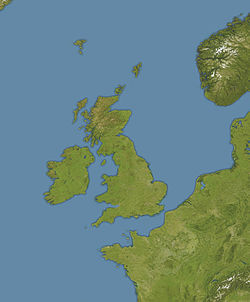| History | |
|---|---|
| Name |
|
| Namesake | Gerusoppa |
| Owner | British India SN Co |
| Port of registry | Glasgow |
| Builder | Palmers Sb & I Co, Jarrow |
| Yard number | 894 |
| Launched | 12 August 1919 |
| Completed | 17 October 1919 |
| Renamed | after launching |
| Identification |
|
| Fate | Sunk by torpedo, 1941 |
| General characteristics | |
| Class & type | War Standard B type cargo ship |
| Tonnage | 5,237 GRT, 3,227 NRT, 8,150 DWT |
| Length |
|
| Beam | 52.2 ft (15.9 m) |
| Draught | 25 ft 3 in (7.70 m) |
| Depth | 28.5 ft (8.7 m) |
| Decks | 2 |
| Installed power | 517 NHP or 3,000 ihp |
| Propulsion |
|
| Speed | 11.7 knots (21.7 km/h) |
| Capacity | 4 passengers |
| Crew | 84 + 2 DEMS gunners |
| Armament | DEMS in WW2 |
SS Gairsoppa was a British cargo steamship that was built in 1919 and sunk in the Battle of the Atlantic in 1941. 85 of her complement were killed, and only one person survived. When she was sunk, her cargo included an estimated 7 million ounces of silver bullion. In 2012 and 2013 a US company recovered part of the bullion, and in 2014 the Royal Mint struck 20,000 silver coins from it.
Contents
- Building
- Peacetime career
- Loss
- Lifeboat voyage
- Monuments
- Richard Ayres
- Salvage
- Silver bullion
- Mail and other artefacts
- References
- Bibliography
Gairsoppa was a War Standard "B" type steamship: one of a set of designs ordered by the UK Shipping Controller in large numbers to replace merchant ships lost during the First World War. She was launched as War Roebuck, but renamed before she was completed. The British India Steam Navigation Company (BI) owned and managed her throughout her career.
The ship was named after either the village of Gerusoppa in Karnataka, southern India, or the Jog Falls near Gerusoppa, which India's British rulers called Gairsoppa Falls. Gerusoppa was once the capital of the Vijayanagara Empire, and has the remains of a 16th-century Jain temple. [1]

